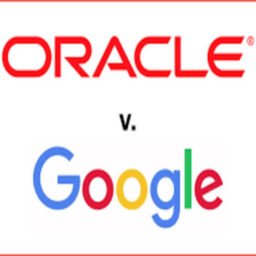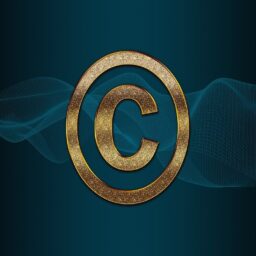INTRODUCTION
Stand-up comedy can be defined as a piece of art comprising of producing, editing, and writing comedic works by comedians who give a live performance. Comedians often complain of ‘Joke Theft’ and therefore, the same can be protected through copyright laws. Copyright Act, 1957, section 2(y) states that the act provides protection to dramatic, sound recording, cinematograph film, musical, literary, and artistic works. For seeking copyright protection fixation is a pre-requisite for all kinds of work but as per section 13 of the act, the element of ‘originality is required in musical, dramatic, literary, and artistic works.
REQUIREMENTS FOR PROTECTION UNDER COPYRIGHTS
Originality and fixation are two important requirements for seeking protection under Copyright Law. There is no fixed standard of originality prescribed under the statutory Copyright Laws, but the same has been evolved through various case laws. In India, there is no express mention regarding the requirement of fixation in the Copyright Act, 1957 but copyright protection also requires fixation of work in an intangible and tangible form. In the case of Walter V Lane[1], the issue in the case was whether The Times newspaper had Copyright protection over the speech made by Lord Rosebery. The House of Lord held that the work was created when the Respondent fixed the speech by using their skills and labour thus the copyright of the speech made by Lord Rosebery would vest in with The Times.
Further, for the protection of dramatic, literary, artistic, and musical works, ‘originality’ is one of the criteria established by the Copyright Act, 1957. In the case of Easter Book Company (EBC) v. D.B.Modak & Anr[2]. the standard of the originality has been discussed. In this case, the Hon’ble Supreme Court rejected the US’s doctrine of ‘modicum of creativity and the UK’s doctrine of ‘sweat of the brow’ respectively. Rather SC adopted principles enshrined in the case of CCH Canadian Ltd. V. Law Society of Upper Canada[3]. The SC applied the CCH standard of originality in this present case. According to CCH, original work is originated first from the author and comprises non-mechanical and non-trivial application of judgment and skills.
FORMS OF COPYRIGHT PROTECTIONS FOR STAND-UP COMEDY
- LITERARY WORK
For literary work, Bern Convention provides for an all-inclusive list to its member states mentioned under Article 2. In India, Section 2(o) of the Copyright Act lays down an all-inclusive list of works.
In the case of University of London Press v. University Tutorial Press[4], it was held by the House of Lords that Literary work is defined as any work irrespective of its ‘literary quality, that is in writing or is printed. Thus, according to this case question papers are literary works.
In Stand Comedy, prior to presenting before the live audience, comedians write or prepare their acts or jokes either on laptops or on paper[5]. The requirement of fixation is fulfilled as there is a record of the preparatory materials. Further, In India, the requirement of ‘originality’ will be satisfied if the act or the jokes originates from the comedians and the skills, judgments and labour of the comedian are proved. Thus, under the ‘literary work’ of Copyright law, a comedian can protect their jokes.
- DRAMATIC WORK
Dramatic work is defined under Section 2(h) of the Copyright Act as any piece of work that includes choreographic work or recitation except cinematograph film. Although, according to statutes, no mention of the requirements of fixations, but several case laws have laid down that work to be a dramatic work performative element is required.
In the case of Norowzian v. Arks Ltd.,[6]the court, in this case, held that it was not a dramatic work as in Norowzian film the dance was impossible to perform by a human being without being edited using jump-cutting. Thus, a performative element in a dramatic work is a prerequisite requirement.
In standup comedy, the comedian requires to perform the jokes in front of a live audience. Face expressions and physical movements are required by the comedians to ensure the efficacy of jokes. Thus, copyright protection in the form of dramatic work can be used to protect, as the performative element is a requirement.
- CINEMATOGRAPH FILM
Section 13(1) (b) of the Copyright Act provides protection to cinematograph films. The Supreme Court in the case of R.G. Anand v. M/s Delux Films & Ors[7] held that facts and plots are only ideas and they cannot be copyrighted and any piece of work will amount to infringement if it bears similarities in expressions with minor changes with a work which is protected under the Copyright Act. Further in this case court established, ‘observer test’, where the second work is ‘unmistakable impression’ of the first work, it will amount to copyright infringement.
The comedians record their performance and thus it is considered as a cinematograph work, if recorded in an audio-visual manner and can seek protection under copyright. Thus, acts that are recorded in audio-visual format under the ‘originality standard’ can be protected under cinematograph work.
- SOUND RECORDINGS
Section 2(xx) of the Copyright Act defines sound recordings as any sound being recorded. There is a requirement for fixation in any medium. Although there is no requirement for originality as per Section 13 for sound recordings, there will be an infringement if there is a similarity between a piece of work and a copyrighted work.
Comedians for live performances often make audio recordings as a method of preparation. Thus, acts and jokes of the stand-up comedians can be protected by audio recording if not copied from any pre-existing work.
CONCLUSION
In India, stand-up comedy is at a developing stage and ‘joke theft’ is a common complaint made by the stand-up comedian. Although joke thefts are not lightly taken in the industry when known, social barriers are formed against the comedian who committed such theft, and eventually, careers are ruined. The current laws need to be modified as per the changing society. Further, for the prevention of this art and to increase learning there is a need for more stringent actions. Thus, there is a need for legal recourse through copyright laws.
Author(s) Name: Vaidehi (Symbiosis Law School, Pune)
References:
[1] Walter v. Lane, (1900) AC 539
[2] Easter Book Company (EBC) v. D.B Modak & Anr., Appeal (Civil) 6472 of 2004
[3] CCH Canadian Ltd. v. Law Society of Upper Canada, 2004 SCC 13
[4] University of London Press v. University Tutorial Press, [1916] 2 Ch.601
[5] Vinson Cunningham, Jerry Seinfeld, Craftsman and Crank, The New Yorker, (Aug. 16, 2021, 7:50 PM), https://www.newyorker.com/culture/culture-desk/jerry-seinfeld-craftsman-and-crank
[6] Norowzian v. Arks Ltd &Ors, [1999] FSR 79
[7] R.G. Anand v. M/s. Delux Films & Ors., 1978 AIR 1613









